Excellence and Opportunities Summary
The audit highlighted several key strengths and areas for growth within Alight’s campaign strategy. Strengths included strong execution speed, consistent on-time delivery, and an effective multi-channel mindset. Campaigns were also structured for continuous testing and iteration, with growing alignment to business priorities such as AI and strategic events.
Opportunities centered on improving full-funnel engagement, ensuring that campaigns connect each buyer stage — from awareness to retention — through a cohesive narrative. There was also a need to start planning with clear end goals, maintain creative and messaging consistency across all channels, strengthen cross-team communication, and design assets around business objectives rather than retrofitting existing materials.
Present Journey Map Summary
The current campaign journey revealed significant fragmentation between funnel stages. Campaigns often launched with strong awareness phases, but later stages like consideration, decision, and purchase were delayed or disconnected. As users advanced through the funnel, they were sometimes transitioned into unrelated campaigns, breaking message continuity. This created a disjointed experience — for example, users initially engaged through Leave Management messaging might later be moved into a 401(k) campaign, losing the relevance and momentum of their original journey.


Campaign Funnel Framework
Before the audit, we didn’t monitor or plan which deliverables supported each funnel stage. Campaigns often started strong but lacked defined next steps or continuity across stages. As part of the audit, I outlined a clear, stage-by-stage structure that connected awareness through purchase, helping the team think holistically about how messaging, assets, and engagement evolve throughout the buyer journey.
This new framework outlines the role and deliverables for each stage of the funnel, ensuring that messaging and creative assets align with buyer intent at every touchpoint.
Awareness
The awareness stage focuses on first impressions — building credibility and positioning Alight as a trusted voice in HR and benefits. The goal is to highlight industry challenges and show how we solve them. Typical deliverables include thought-leadership content, infographics, PR placements, and social campaigns designed to name the enemy (industry pain points) while showcasing transparency and expertise through blogs, videos, and research reports.
Consideration
Once prospects begin evaluating options, campaigns shift toward education and value. This stage focuses on showing how Alight’s solutions outperform competitors through practical, evidence-based content.
Deliverables include webinars, eBooks, customer stories, and comparison tools that help buyers assess fit. Interactive calculators, nurture emails, and solution-specific web pages help move audiences from curiosity to active interest.
Decision
At this point, prospects are close to a choice and need reassurance. Campaigns center on proof and validation — real results, ROI, and third-party endorsements.
Deliverables include detailed case studies, ROI calculators, demo recordings, analyst reports, and implementation roadmaps that make the decision to move forward feel low-risk and well-supported.
Purchase
The purchase stage is all about confidence and clarity. Campaigns make it easy to take action with strong calls to action, onboarding materials, and proof of credibility.
Deliverables include product briefs, demo recordings, customer testimonials, analyst validation, and compliance documentation. For existing customers, this stage also introduces opportunities for upgrades or expanded solutions.

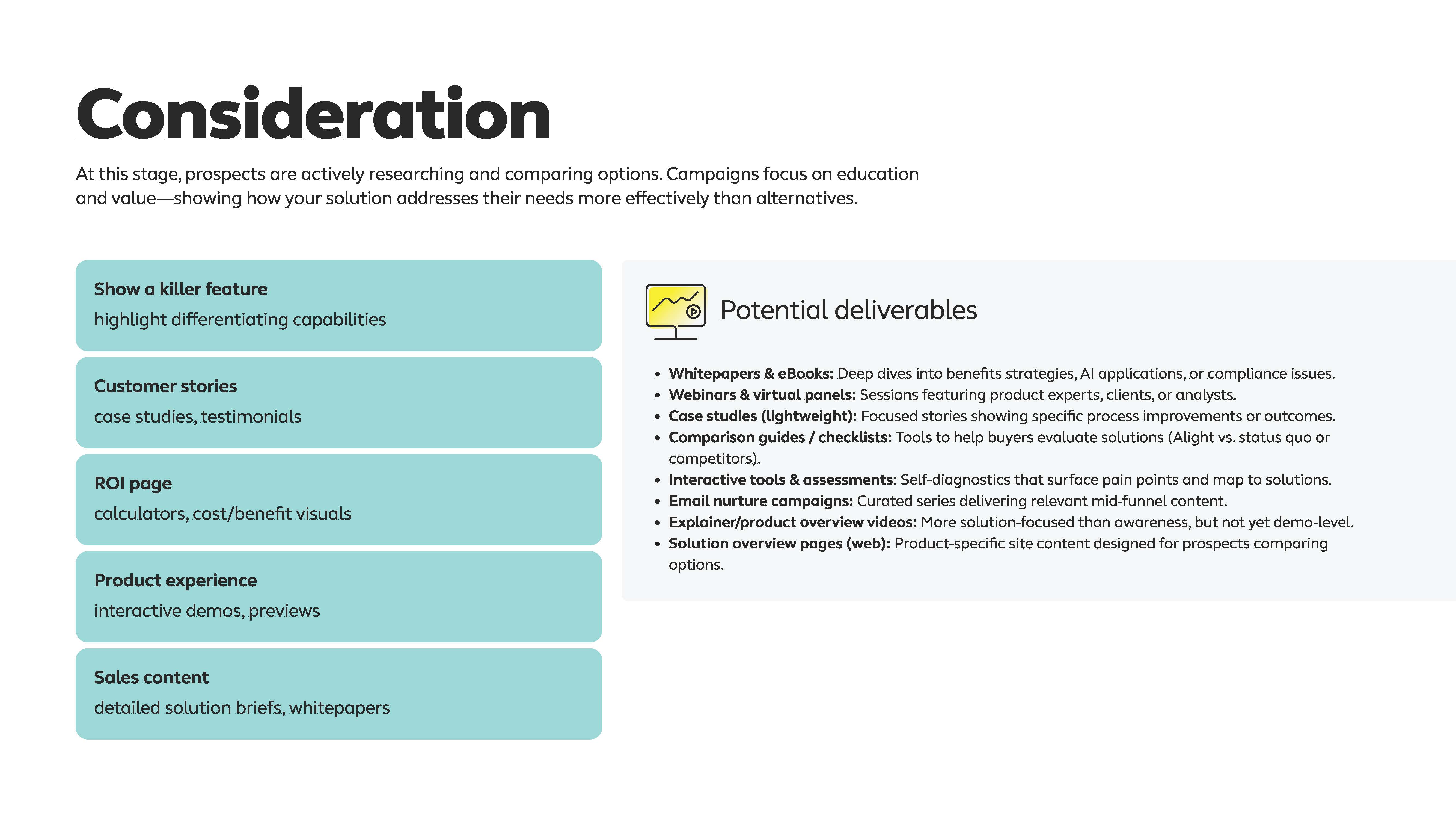
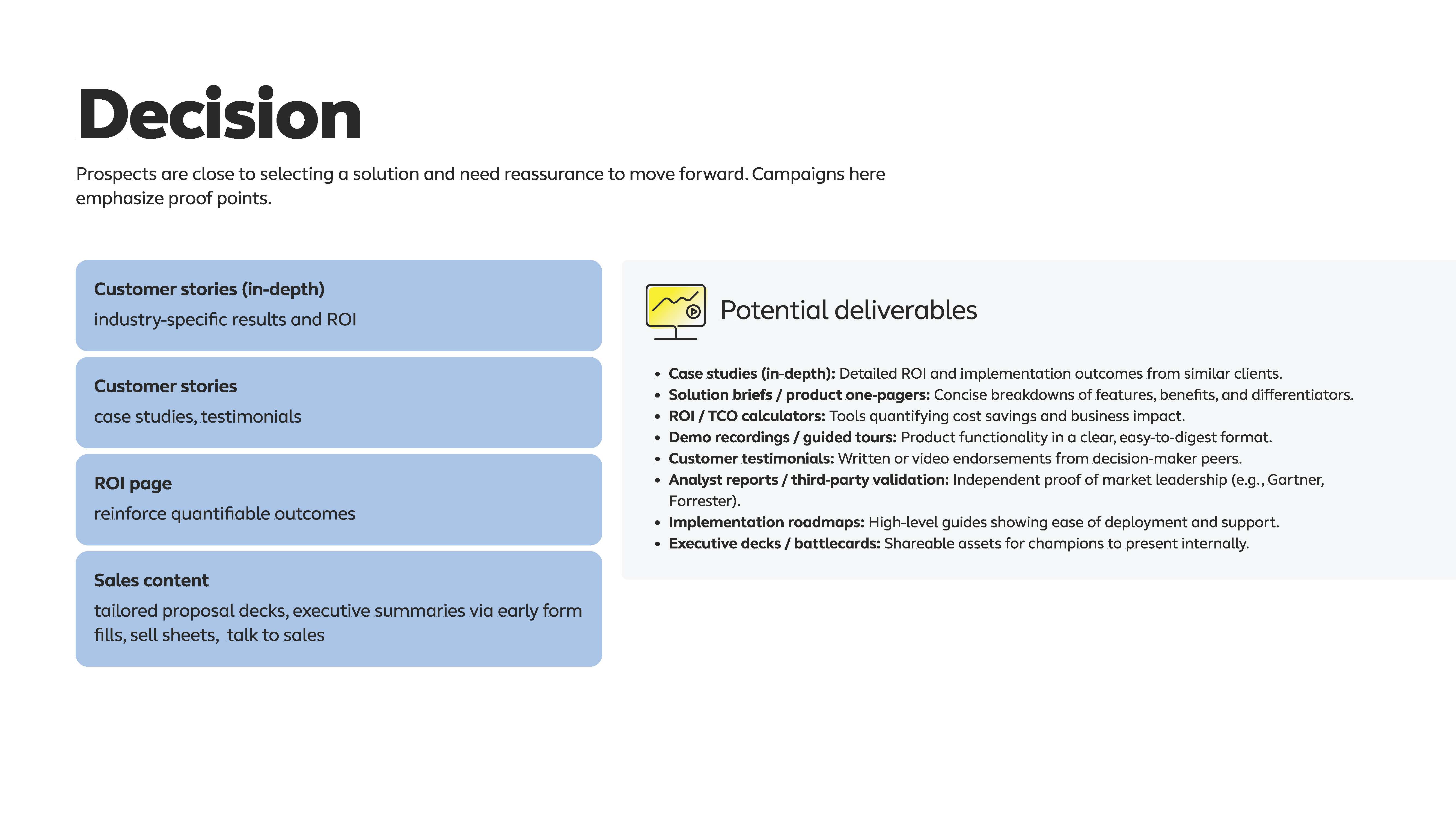
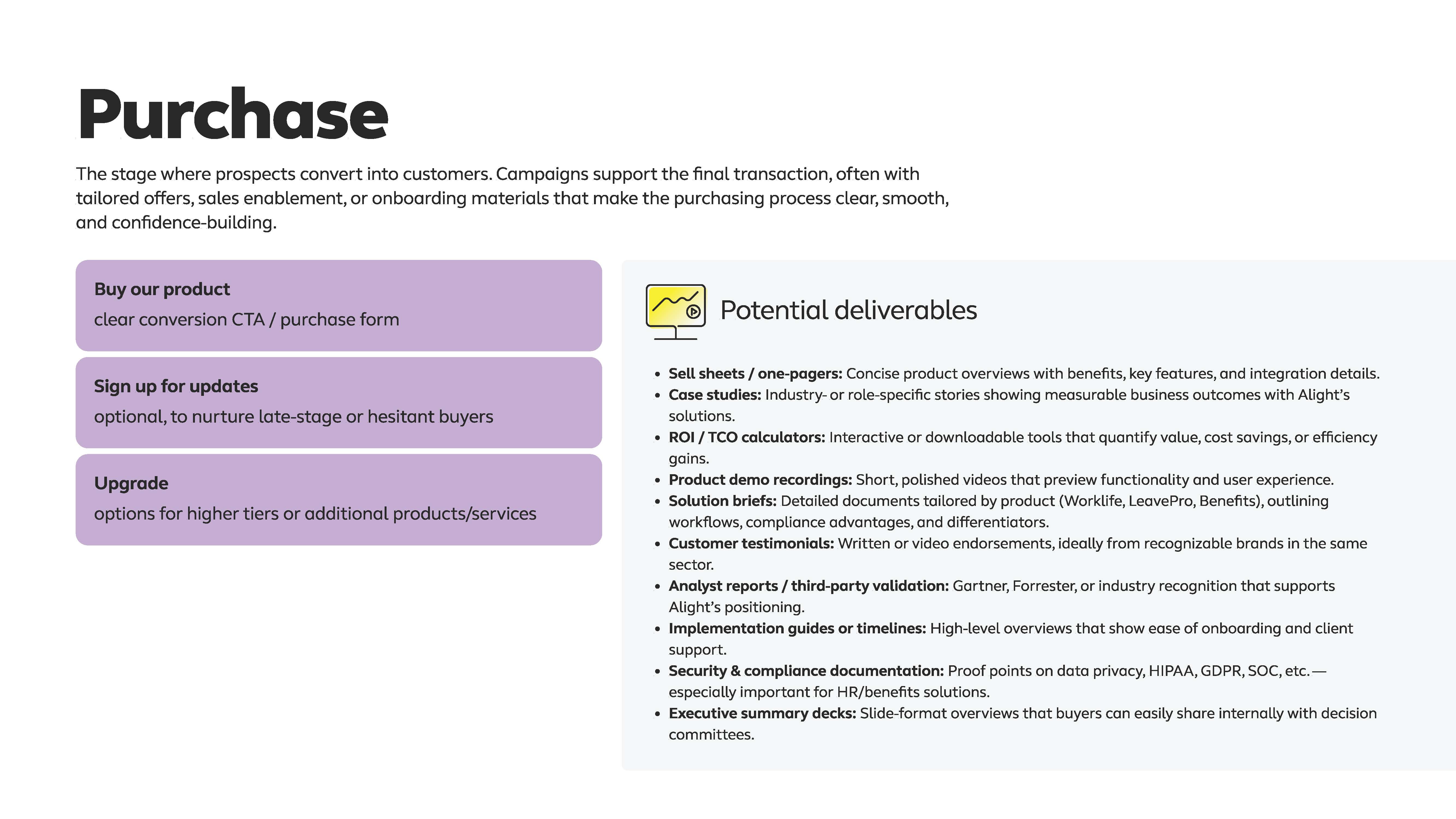
Outcomes
By defining what success looks like at each stage — and tying specific deliverables to those points — we built a repeatable, connected framework that keeps campaigns aligned, measurable, and cohesive from the first impression through purchase.
Cohesive Storytelling Framework
After mapping and restructuring the funnel stages, I developed a clear framework that guides prospects from first touch to conversion in a structured, purposeful way. The goal was to create a campaign system that not only moved audiences efficiently through each stage, but did so with a consistent voice and visual identity.
New Funnel
The new funnel model establishes a connected flow from awareness through purchase. At the top, broad messaging captures attention and introduces the brand. As prospects move into the consideration stage, the focus shifts to education and trust-building through customer stories, product features, and ROI tools. The decision stage provides the confidence needed to act, using demos, in-depth case studies, and proof points. Finally, the purchase stage makes conversion simple and supportive, with post-purchase initiatives aimed at retention, upgrades, and long-term customer value.
The full campaign strategy presentation dives deeper into funnel mapping, messaging systems, and creative guidelines.
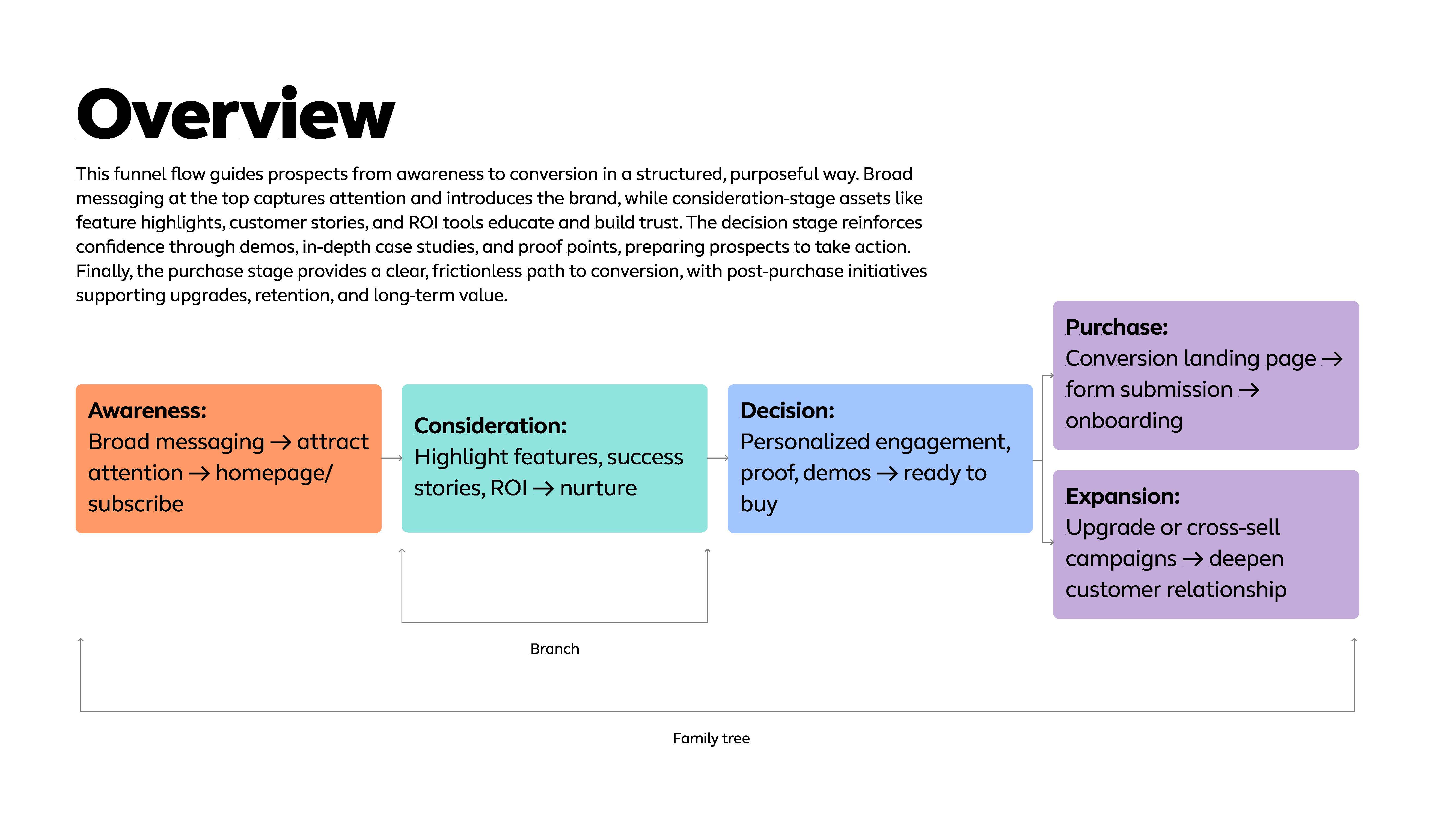

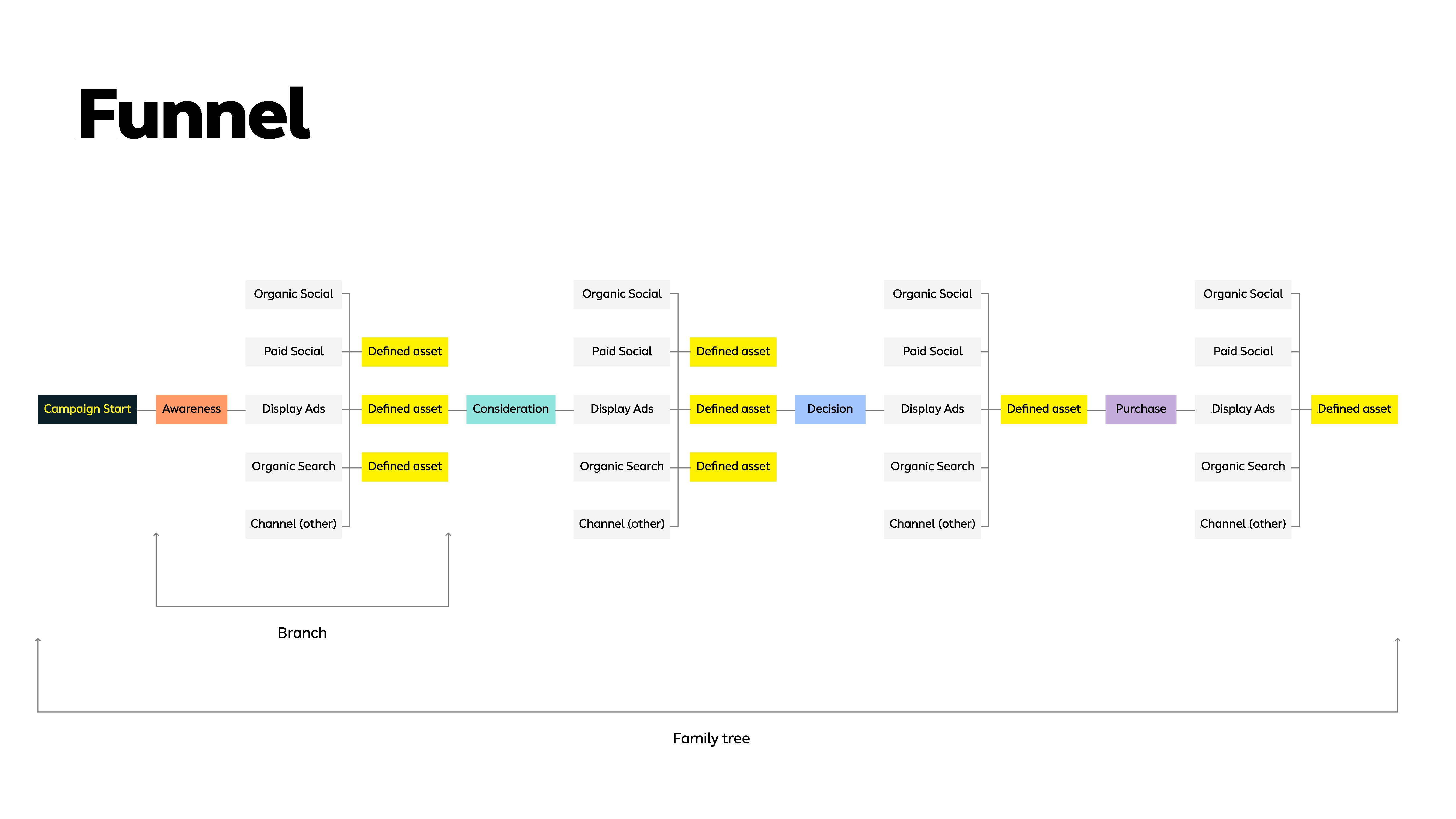
Designing for Cohesion
To make this funnel truly effective, I emphasized the importance of a cohesive story — one that feels like a continuous conversation rather than a set of disconnected campaigns. Messaging evolves naturally from stage to stage, maintaining clarity, consistency, and intent throughout the journey.
I visualized this approach as a “family tree,” where each stage of the funnel functions as a branch of the same campaign family. Every piece of content — from awareness ads to sales enablement tools — shares the same tone, look, and feel. This unified design and messaging system helps reinforce brand recognition, strengthen trust, and make every interaction feel part of a larger, well-orchestrated narrative.